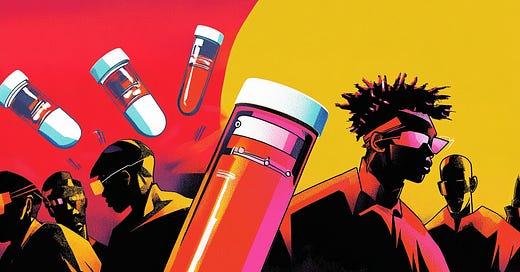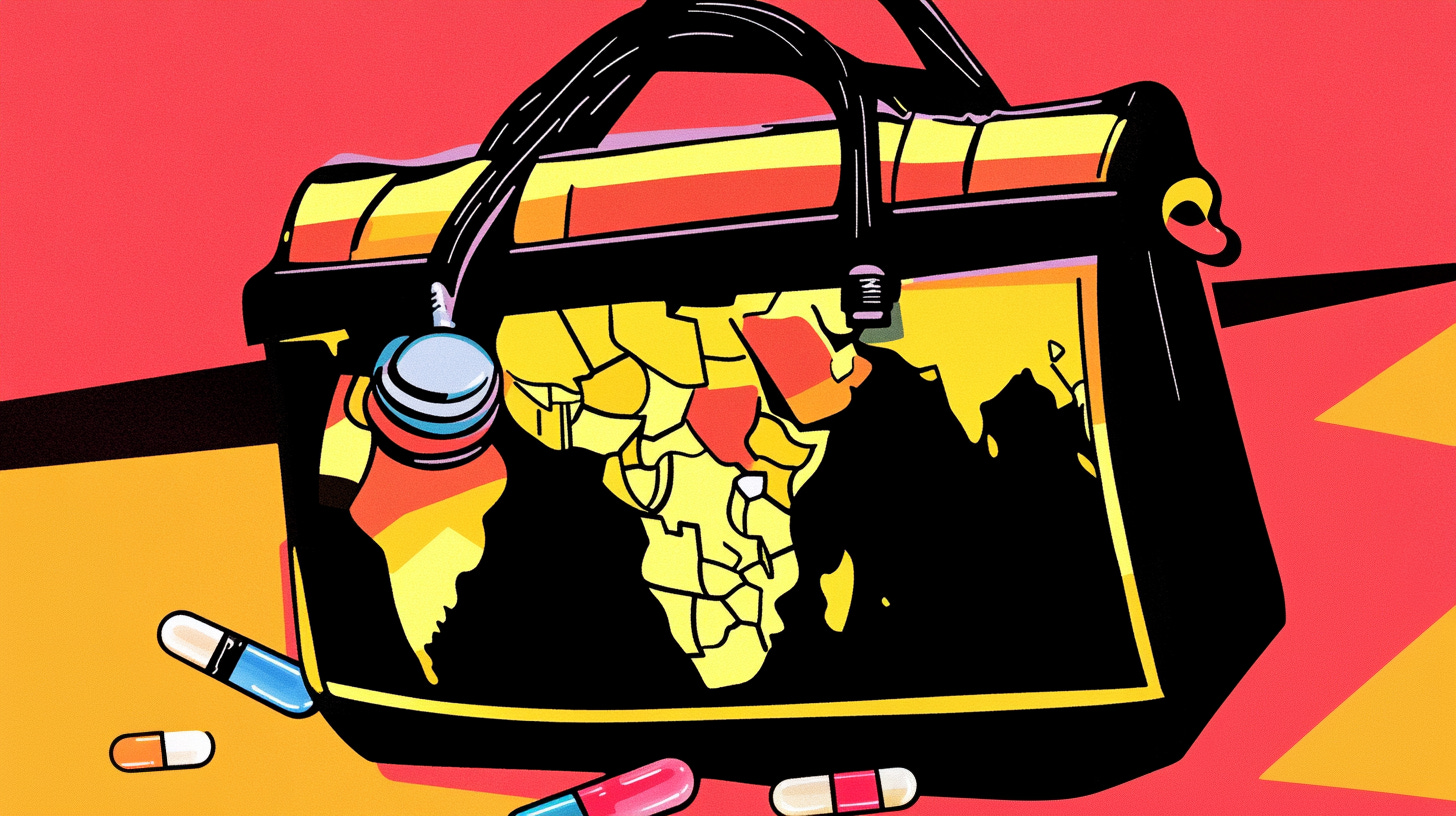A shot in the arm
How South Africa can turn the USAID closures into an opportunity to recruit world-leading medical scientists
A good friend of mine has seen his research in South Africa collapse.
He’s a brilliant young American infectious disease expert (and a medical doctor to boot) who has already published in some of the world’s leading medical journals. His research focuses on TB and HIV/AIDS, illnesses that continue to devastate South Africa’s poorest communities. But when the Trump administration, with the urging of Elon Musk’s Department of Government Efficiency (DOGE), terminated vast numbers of research grants, his funding vanished almost overnight. He now has just weeks to wind down his studies and contemplate whether he has a future in South Africa.
My friend is not alone.
In South Africa and across the African continent, the abrupt cessation of US funding for health-related projects and research has left numerous critical programmes in jeopardy and the careers of dozens of scientists at risk. In South Africa alone, over R800 million in research grants from the US National Institutes of Health (NIH) are at risk, affecting top universities and hindering progress in developing new tools to fight leading infectious disease killers.
But as I’ve argued before, the radical reshaping of US foreign aid could prompt a painful but necessary rethinking of Africa’s historical reliance on international donors. Yes, the withdrawal of American support, particularly funding for critical health programmes, brings severe immediate costs. But it might also offer long-term benefits, if we are proactive.
This is precisely why South Africa should seize this moment. Rather than turning away from the US, South Africa could strategically attract international scientists looking for stability and new opportunities. Says my friend:
The message taking up all the oxygen right now is that this is the time to turn away from the US and rethink the broader relationship with the rich North. Africa has long been too dependent on money from the North, and now that dependence has been exposed as risky. This is true. But just because the US government is now run by a regressive and isolationist administration doesn’t mean US scientists are not a dedicated and valuable resource.
Others have already seen an opportunity. European universities are launching programmes to welcome ‘scientific asylum seekers’. France’s Aix Marseille University received applications within hours of announcing its Safe Place for Science initiative. The university president, Éric Berton, is explicit: this is about both principle and opportunity – reversing the brain drain that once emptied Europe’s labs. Canada, too, senses the tide turning, actively recruiting top US researchers fleeing uncertainty and political persecution. As Dan Gardner reminds us, referring to the 1930s, ‘fools sent European scientists to America; now America may return the favour’.
The African context, of course, is distinct. Historically, the continent’s relationship with Global North research institutions has often been imbalanced (some might even call it neocolonial). International scientists would parachute in with funding, hire local collaborators to carry out fieldwork and publish the findings in prestigious Northern journals, often leaving limited lasting benefit behind. But this moment presents a chance to rewrite that script. Africa now has the opportunity to become a more active, agenda-setting force in global (medical) science. South Africa, in particular, could position itself as a vibrant hub of scientific excellence, welcoming displaced international researchers not just as visitors, but as long-term partners embedded in local institutions. By doing so, it could help accelerate African-led research on African challenges, grounded in local context and global collaboration.
It is not only about addressing the immediate health crises South Africa and other African countries face. The long-term benefits could be substantial. Recent evidence from the American Economic Review underlines this clearly.1 The study examines early 20th-century initiatives funded by the Duke Endowment in North Carolina, showing that investing in hospitals not only improved health infrastructure but also attracted highly qualified physicians. The results? A dramatic 7.5% drop in infant mortality and even greater reductions – nearly 14% – among black infants, significantly narrowing racial health disparities. These health gains persisted over decades, proving that investment in medical research and infrastructure is not just humanitarian; it’s economically sound, creating healthier societies for generations. These findings are particularly relevant for South Africa, given our persistent inequalities in healthcare access.
So, here’s a concrete and timely proposal: South Africa could offer a new professional and personal home to international medical researchers whose work is highly relevant to the country and whose funding has been disrupted by recent US policy decisions. Provide a clear pathway to permanent residence or citizenship, and commit to a stable five-year salary package. In return, these scientists would embed themselves within local universities and research institutes, continuing their vital research work while also helping to train and mentor the next generation of South African researchers. Many could also offer their clinical expertise in public hospitals, directly supporting our overstretched health system.
Making this work would require a realistic approach to financial incentives. Researchers from the US or Europe would likely need to accept substantially lower salaries than they’re used to. For example, junior medical faculty in the US can earn upwards of R3.6 million (about $200,000) per year. In South Africa, a competitive offer might be between R1.5 and R2 million annually (roughly $75,000 to $100,000). Still, when factoring in South Africa’s lower cost of living (and if the offer includes meaningful research support, fast-tracked residency or citizenship, and streamlined administrative assistance), this could prove an attractive option.
Even a modest initiative supporting 10 to 20 scientists at this level would cost between R20 million and R40 million per year. That’s not an insignificant sum, but the potential payoff is transformative. A more ambitious plan could support 100 scientists over five years at R1.5 million each, totalling roughly R650 million. To put that in perspective, it is less than what the government collects annually from the plastic bag levy. In contrast to the politically stalled National Health Insurance plan, this proposal offers immediate, tangible benefits. It could directly address healthcare gaps while simultaneously supporting long-term scientific and institutional capacity.
The potential returns on investing in critical medical expertise are enormous. Just consider the recent breakthrough in HIV prevention: a twice-yearly injection of lenacapavir that has shown 100% efficacy in early trials, including among women and girls in Uganda and South Africa. The implications of such a vaccine are profound. HIV has long imposed heavy costs on families, the health system, and the public purse. A medicine that prevents infections at scale would save lives, reduce healthcare spending, and boost productivity. It would keep families intact – fewer orphans, fewer grandparents raising children alone. The effects would ripple outward: stronger households, more stable communities, less exposure to poverty and crime.
These are exactly the kinds of discoveries South Africa should want to be part of – and the kinds of scientists we should be working to bring in. Giving medical researchers like my friend the opportunity to continue their work here, and to train the next generation alongside local experts, would not be charity. It would be one of the smartest, highest-yield investments South Africa can make.
As the GNU prepares its first budget, perhaps Minister Enoch Godongwana should schedule a quick Zoom call with Ministers Leon Schreiber and Aaron Motsoaledi.
‘A shot in the arm’ was first published on Our Long Walk. Support more such writing by signing up for a paid subscription. The images were created with Midjourney v6.1.
Hollingsworth, A., Karbownik, K., Thomasson, M.A. and Wray, A., 2024. The gift of a lifetime: The hospital, modern medicine, and mortality. American Economic Review, 114(7), pp.2201-2238.






